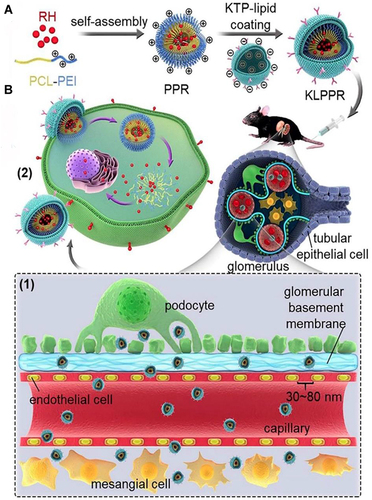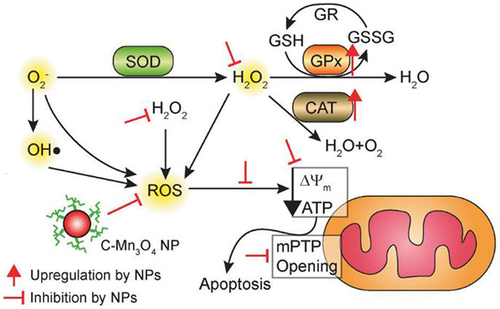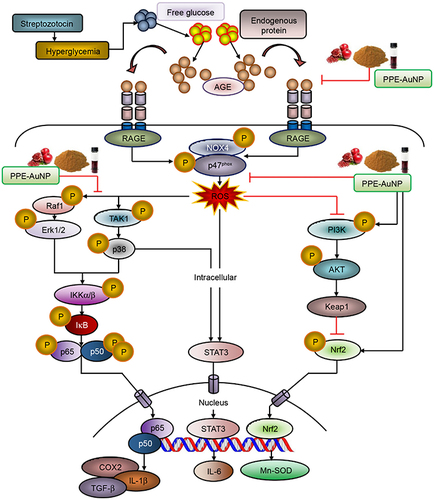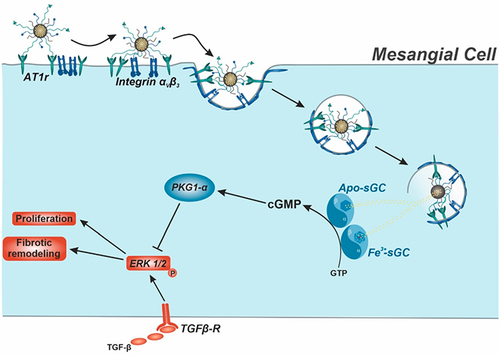Figures & data
Table 1 Examples of Preclinical Studies About Different Nanoplatform in the Treatment of DN
Figure 1 Generalized map of kidney-targeted drug transport based on KLPPR lipid nanoparticles.

Figure 2 Schematic diagram of the pathway by which C-Mn3O4 NPs maintain redox homeostasis by counteracting H2O2 distress.

Figure 3 The diagram illustrates the possible potential pathways of action of PPE-AuNP in reversing STZ-induced DN.

Figure 4 Schematic diagram of treatment principle. Nanoparticle (NP)-assisted cinaciguat (CCG) delivery to intracellular Apo-/Fe3+-sGC of target mesangial cells.

